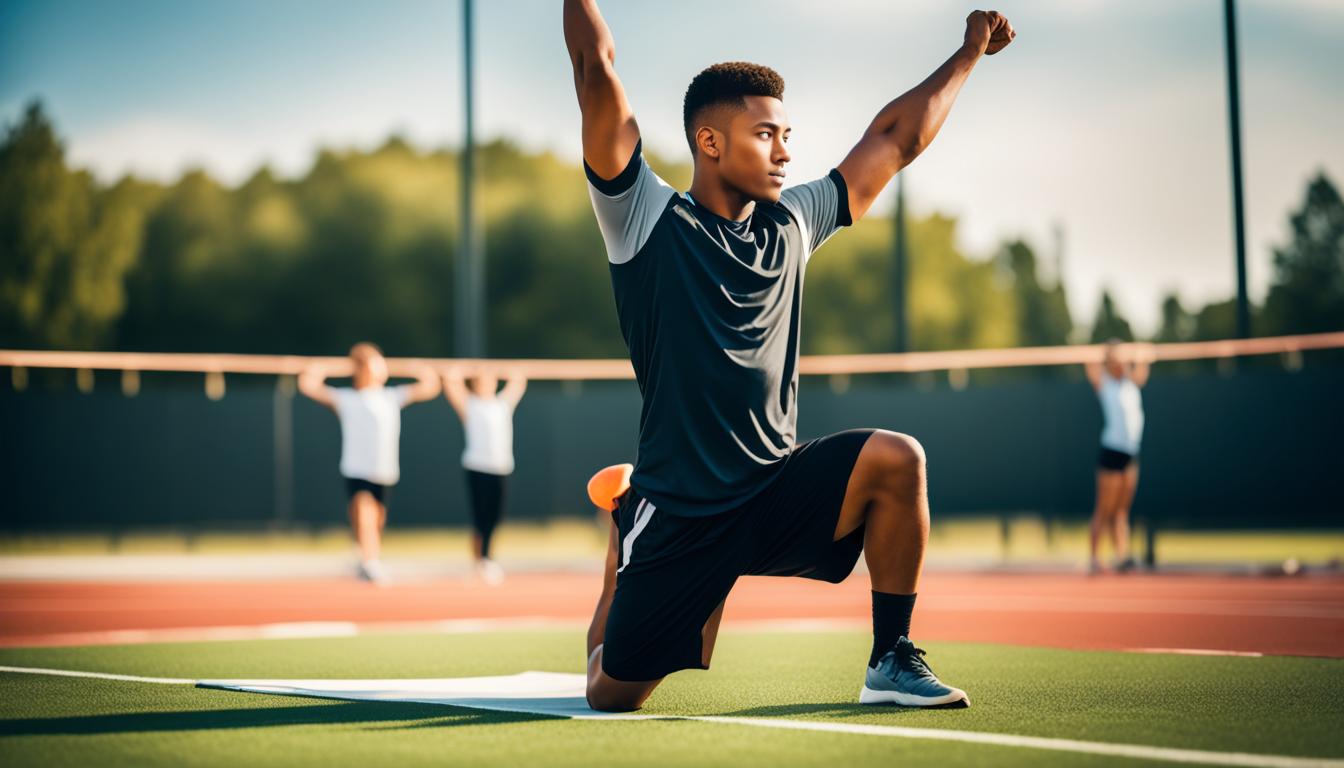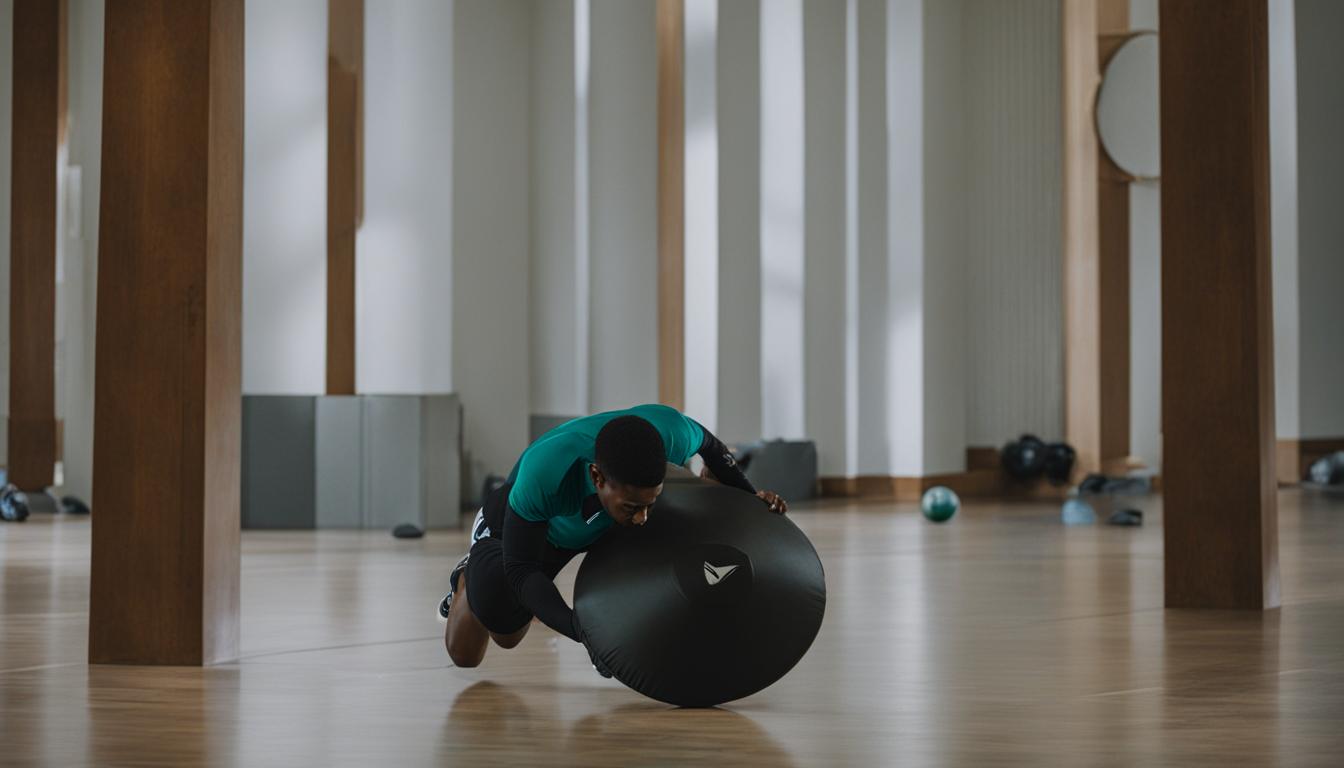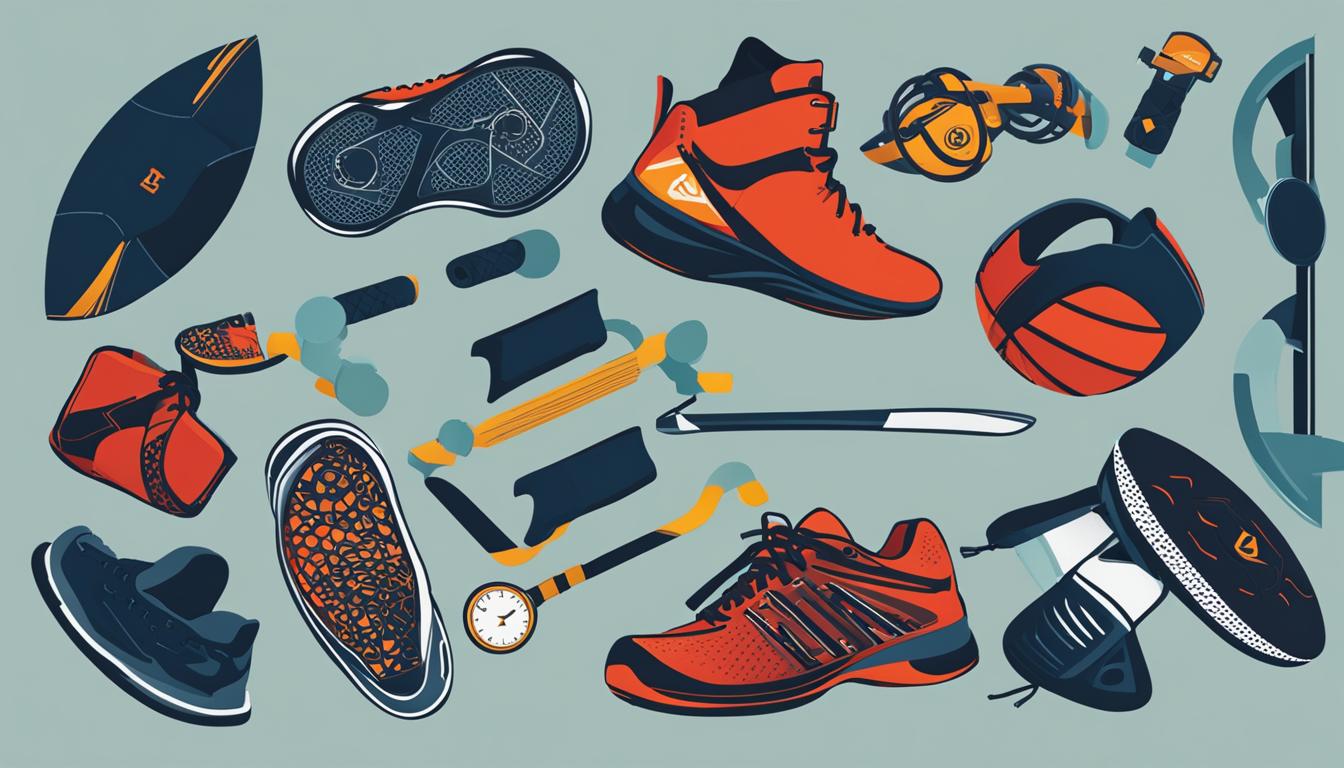Exercise is good for the body, but it’s important to take the necessary precautions to prevent sports injuries. The quality of protective equipment, such as padding, helmets, shoes, and mouth guards, has improved safety in sports. However, it’s still possible to be susceptible to injury. Always consult with a healthcare provider before starting any physical activity. It’s especially important for vigorous exercises or sports.
Proper training practices, wearing the right gear, maintaining good health, warming up/stretching properly, and using the correct techniques can all help prevent common sports injuries like sprains, strains, joint injuries, muscle injuries, dislocations, fractures, Achilles tendon injuries, and shin pain. Developing a fitness plan, alternating muscle groups, cooling down, staying hydrated, stretching, using the right equipment, resting when tired, and participating in adequate rehabilitation after an injury are all important steps to prevent sports injuries.
Key Takeaways:
- Sports injury prevention starts with proper training practices and wearing the right gear.
- Maintain good health and stay hydrated to reduce the risk of sports injuries.
- Always warm up and stretch properly before engaging in physical activity.
- Use the correct techniques and listen to your body to avoid overexertion.
- Rehabilitate and rest adequately after an injury to prevent further damage.
10 Tips for Preventing Sports Injuries in Kids and Teens
Young athletes are passionate about their sports, but their intense training puts them at a higher risk for sports-related injuries. That’s why it’s important to take proactive measures to keep them safe. According to pediatric sports medicine expert R. Jay Lee, here are 10 injury prevention tips specifically designed for kids and teens:
- Set realistic goals: Encourage your child to set achievable goals to prevent overexertion and reduce the risk of injury.
- Plan and prepare: Ensure that your child is adequately prepared for each activity by providing the necessary equipment and ensuring proper supervision.
- Warm up and cool down: Teach your child the importance of warming up before exercising and cooling down afterward to prevent muscle strains and other injuries.
- Take your time: Advise your child not to rush into intense activities. It’s important to gradually increase the level of difficulty to avoid pushing too hard.
- Listen to your body: Teach your child to pay attention to their body’s signals. Encourage them to take breaks when needed and acknowledge any signs of stress or fatigue.
Exercises for Injury Prevention
Exercises play a crucial role in injury prevention. By maintaining flexibility and strengthening the core, young athletes can significantly reduce the risk of sports-related injuries.
Flexibility exercises help to increase the range of motion and reduce the likelihood of muscle strains and joint sprains. Encourage your child to incorporate stretching exercises into their routine, targeting major muscle groups.
Core-strengthening exercises, such as sit-ups and planks, help in improving balance, stability, and overall body control. A strong core provides a solid foundation and supports better movement patterns, reducing the risk of injury.

Your child’s safety is of utmost importance. Make sure they are following proper form and technique while performing these exercises to maximize their benefits and minimize the risk of injury.
In addition to individual efforts, sports injury prevention programs can educate young athletes about injury prevention techniques and prepare them for safe participation in their chosen sports. These programs play a crucial role in providing young athletes with the knowledge and skills necessary to protect themselves from sports-related injuries.
Strategies for Safe Sports Participation
Regardless of the sport you participate in, there are strategies you can implement to stay safe and reduce the risk of sports injuries. One key strategy is maintaining flexibility through dynamic stretches before and after activities. This helps prepare your muscles for the demands of exercise and can prevent strains and sprains.
Another important strategy is strengthening your core. Exercises like abdominal crunches and planks improve the stability of your spine and pelvis, reducing the risk of common injuries such as back strains.
Using proper technique is also crucial. Whether it’s the correct form for weightlifting or the right way to tackle in football, following proper technique minimizes the strain on your body and decreases the likelihood of injury.
Wearing the appropriate equipment is essential for injury prevention. Whether it’s helmets, knee pads, or shin guards, protective gear helps absorb impact and protect vulnerable areas of your body.
Don’t forget to take breaks during prolonged activity. Overexertion can increase the risk of overuse injuries. Resting allows your body time to recover and prevents excessive strain.
If you’ve had a previous injury, ensuring its proper healing is important. Rushing back into activity too soon can lead to reinjury. Give your body the necessary time to heal and follow a gradual return-to-sport program under the guidance of a healthcare professional.
By following these strategies, you can minimize the risk of common sports injuries and enjoy your athletic pursuits safely.

The Role of Overuse Injuries in Sports
Overuse injuries are a common occurrence in sports, surpassing traumatic injuries in their prevalence. These injuries occur when the body is pushed beyond its physical limits or level of conditioning, leading to strain and damage. Factors such as training errors, poor technique, and inadequate warm-ups can contribute to the development of overuse injuries.
To prevent overuse injuries, it is crucial to adopt certain preventive measures. Firstly, it is essential to set realistic goals and aspirations for physical activity, taking into account your current fitness level and abilities. Planning and preparing for physical activity is also important to ensure that you have the appropriate equipment and resources in place.
Proper warm-up and cool-down routines are crucial to priming your body for exercise and aiding in its recovery. Gradually increasing your training levels over time rather than pushing yourself too hard too soon allows your body to adapt and build strength gradually, reducing the risk of injury. Above all, listening to your body and recognizing signs of excessive stress or fatigue is crucial in preventing overuse injuries.
By implementing these precautions, you can significantly reduce the risk of overuse injuries and maintain your safety while actively participating in sports. Take the necessary steps to protect your body and enjoy your sports activities to the fullest.

Conclusion
In conclusion, prioritizing sports injury prevention is essential for athletes of all ages and skill levels. By following expert tips and implementing injury prevention strategies, you can effectively reduce the risk of common sports injuries. To ensure your safety, it is crucial to consult with a healthcare provider before engaging in any physical activity.
Make sure to properly warm up and cool down before and after each session, as this will prepare your body for the demands of the sport and help prevent injuries. Using the right equipment, such as supportive footwear and protective gear, is also vital in minimizing the risk of sports-related injuries.
Moreover, keep in mind the importance of listening to your body. Recognize the signs of stress and avoid pushing yourself beyond your limits. Your body needs adequate rest and recovery time to prevent overuse injuries and maintain optimal performance.
By incorporating these preventive measures into your sports routine, you can enjoy your favorite activities while minimizing the risk of injury. Stay safe, take care of your body, and keep playing!
FAQ
What are some injury prevention strategies for sports?
Some injury prevention strategies for sports include proper training practices, wearing the right gear, maintaining good health, warming up/stretching properly, using correct techniques, and participating in adequate rehabilitation after an injury.
What are some exercises for injury prevention?
Exercises for injury prevention include maintaining flexibility through dynamic stretches, strengthening the core with exercises like abdominal crunches and planks, and alternating muscle groups.
How can sports injury prevention programs help young athletes?
Sports injury prevention programs can play a crucial role in educating young athletes about injury prevention techniques and providing guidance on safe sports participation.
How can I reduce the risk of sports injuries?
To reduce the risk of sports injuries, you can maintain flexibility through dynamic stretches, strengthen your core, use proper technique, wear appropriate equipment, take breaks during prolonged activity, and ensure proper healing of previous injuries.
How can overuse injuries be prevented in sports?
Overuse injuries can be prevented in sports by setting realistic goals, planning and preparing for physical activity, warming up and cooling down properly, gradually increasing training levels, and listening to your body for signs of excessive stress.
Why is sports injury prevention important?
Sports injury prevention is important for athletes of all ages and levels as it reduces the risk of common sports injuries and allows individuals to participate in sports and activities safely.
Source Links
- https://www.hopkinsmedicine.org/health/conditions-and-diseases/sports-injuries/5-tips-for-preventing-sports-related-injuries
- https://www.mountsinai.org/care/orthopedics/services/sports-medicine/conditions/sports-injury-prevention
- https://www.hopkinsmedicine.org/health/conditions-and-diseases/sports-injuries/preventing-sports-injuries


